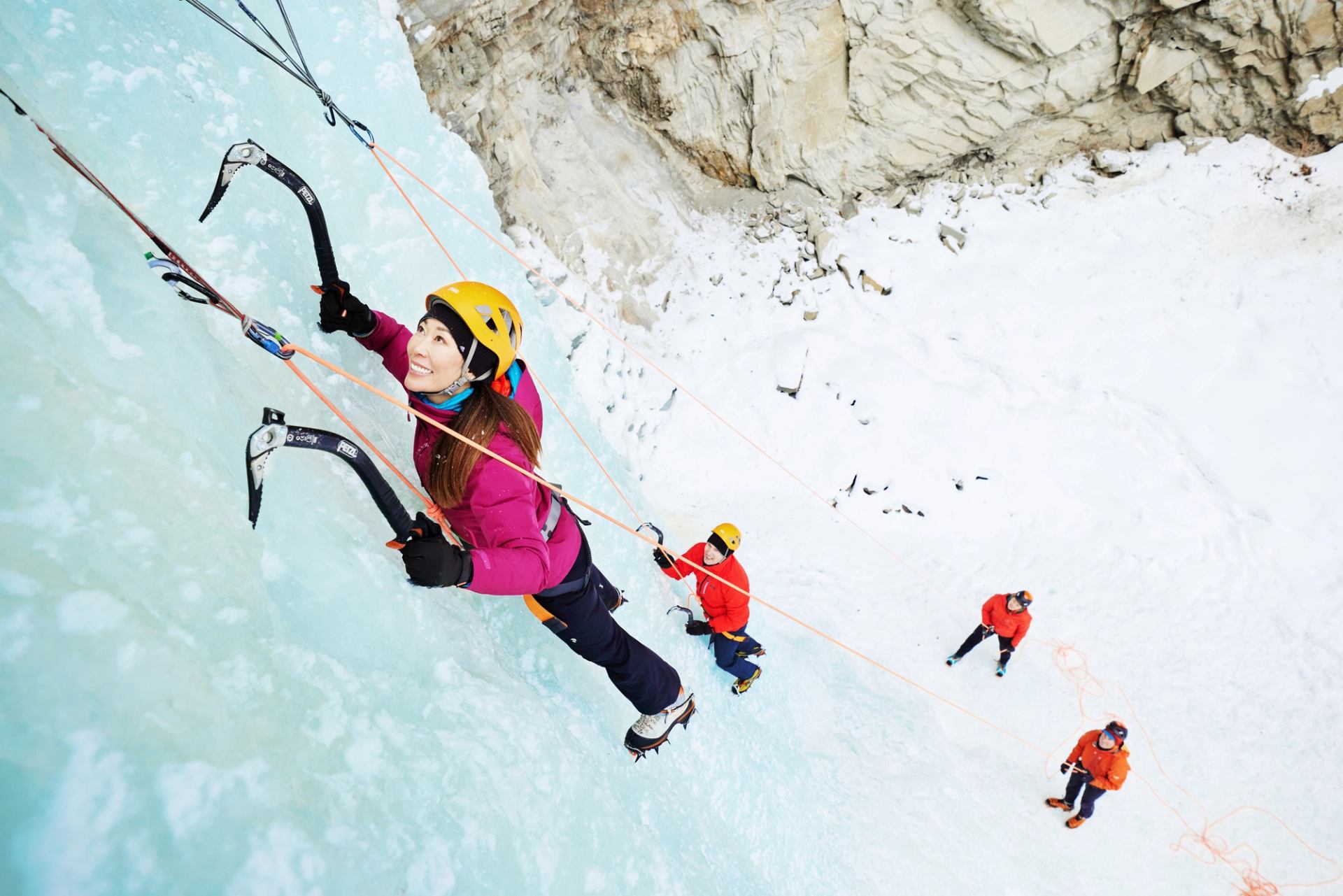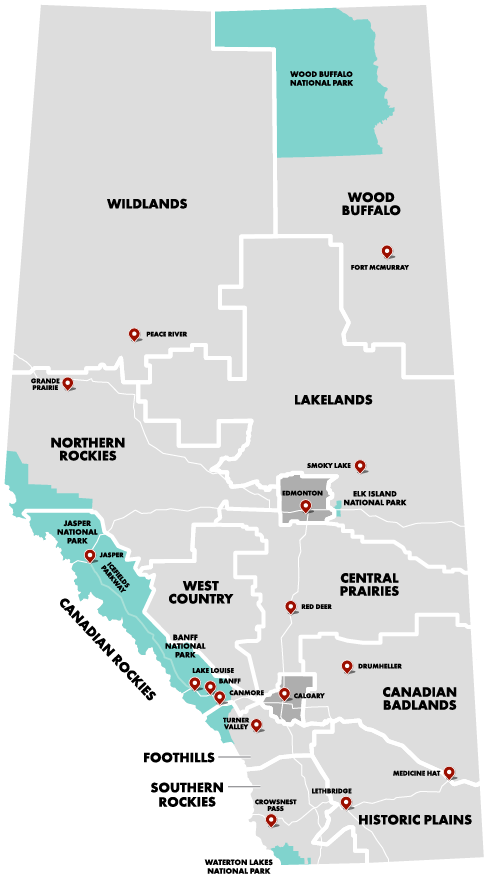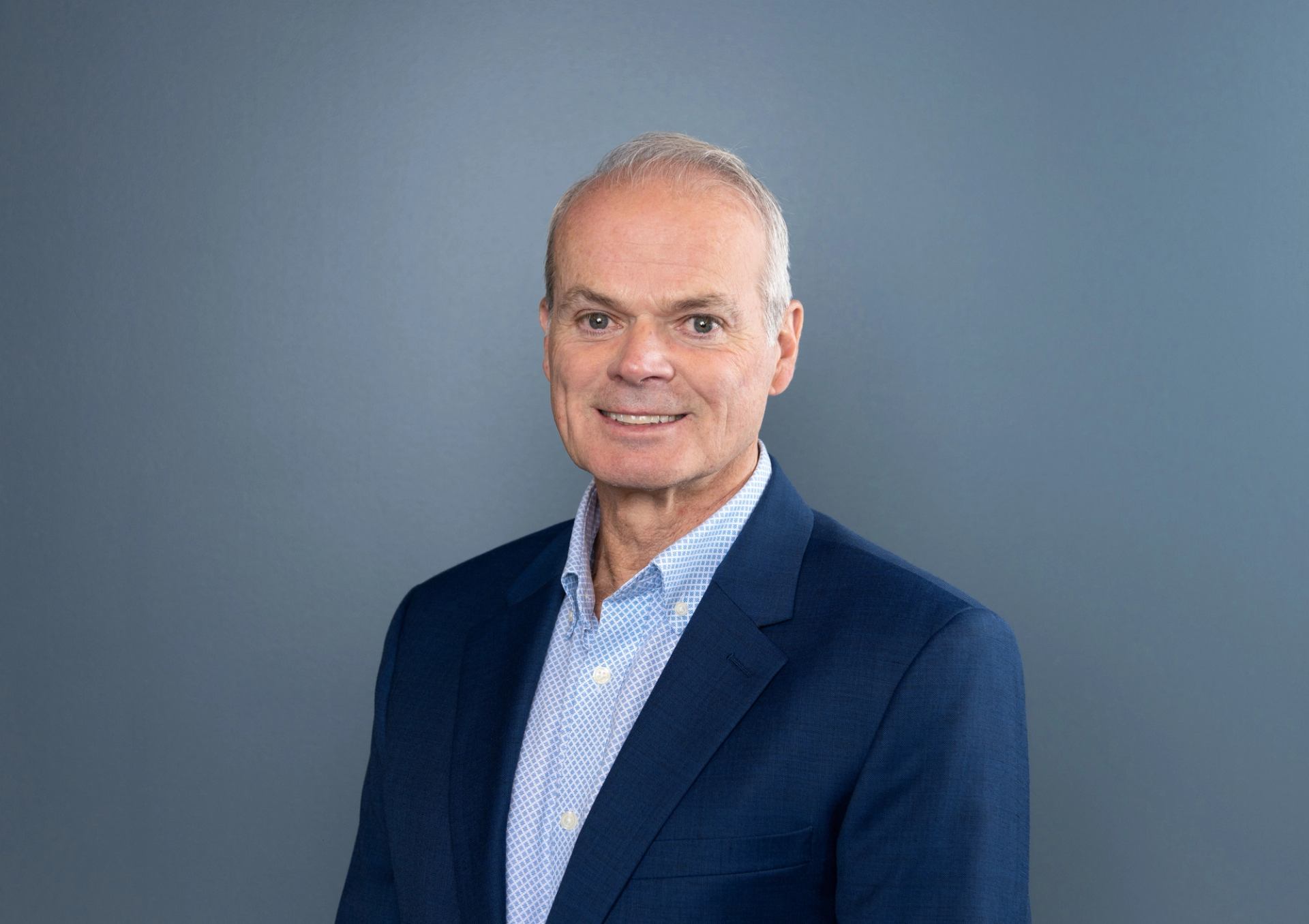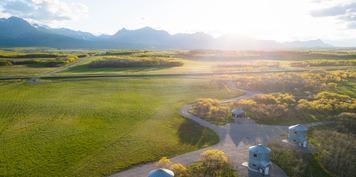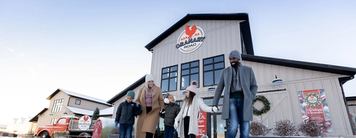The global competition for visitors is fierce. To stay competitive and realize our fair share of the global tourism economy, we must continually develop our sector’s offering to visitors and Albertans alike. Bolstering supply for the long-term ensures Alberta has the desirable travel experiences that meet the ever-changing needs of visitors.
With 60 per cent of visitation and 75 per cent of expenditures currently occurring in mature tourism destinations, we have an opportunity to develop and enhance the tourism offerings across other regions of the province. Seasonal and geographical dispersion will be key to growing our visitor economy as we continue to rebound and rebuild out of the pandemic.
Smaller regions reflect diversity
Traditionally, Travel Alberta’s support to operators, DMOs and other stakeholders throughout the province has been guided by allocating our team across 6 regions – each quite vast in geography. Long-standing and valid feedback from industry is that this approach didn’t accurately portray the diversity of place and array of experiences within a region or provide an understanding of a region’s holistic development needs. We agree.
That’s why we’ve changed our boundary mapping from 6 regions to 13 regions. To get closer to industry and collaborate better with stakeholders, operators, and communities.
